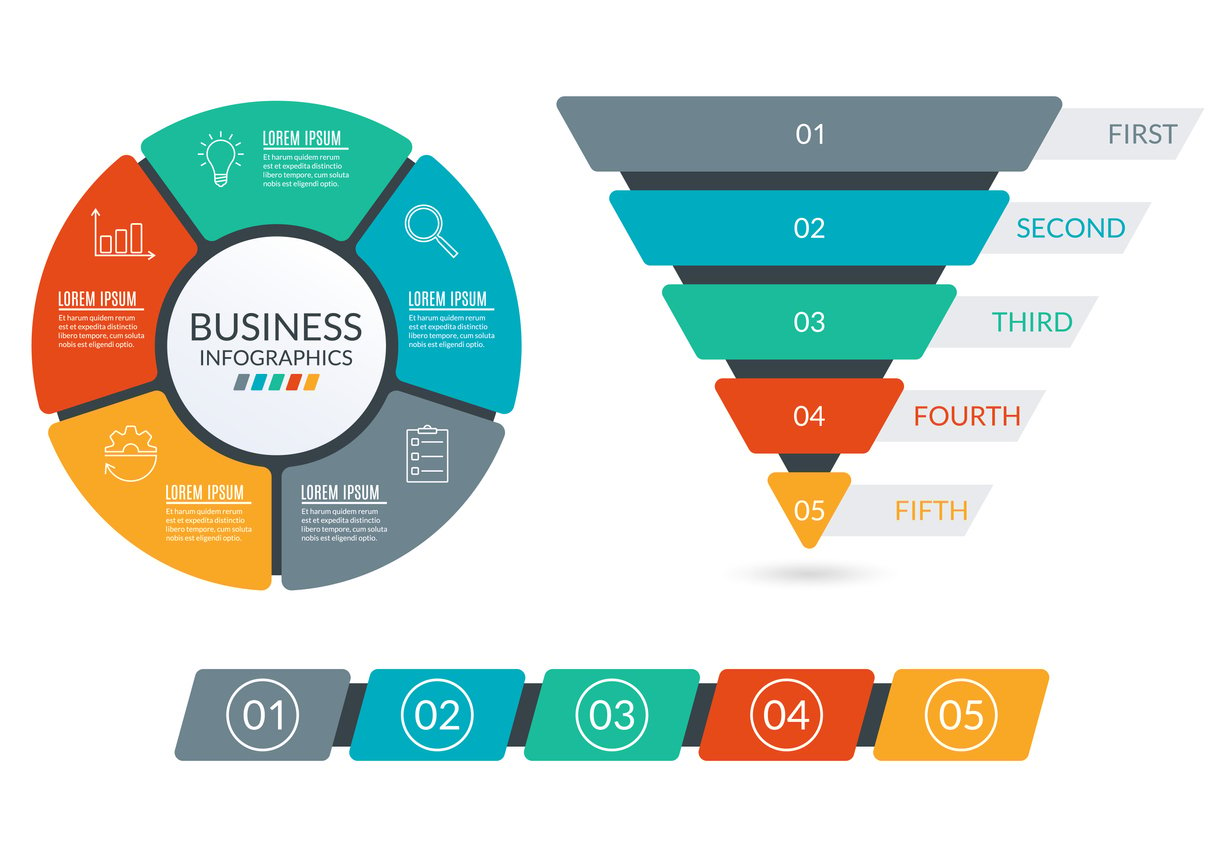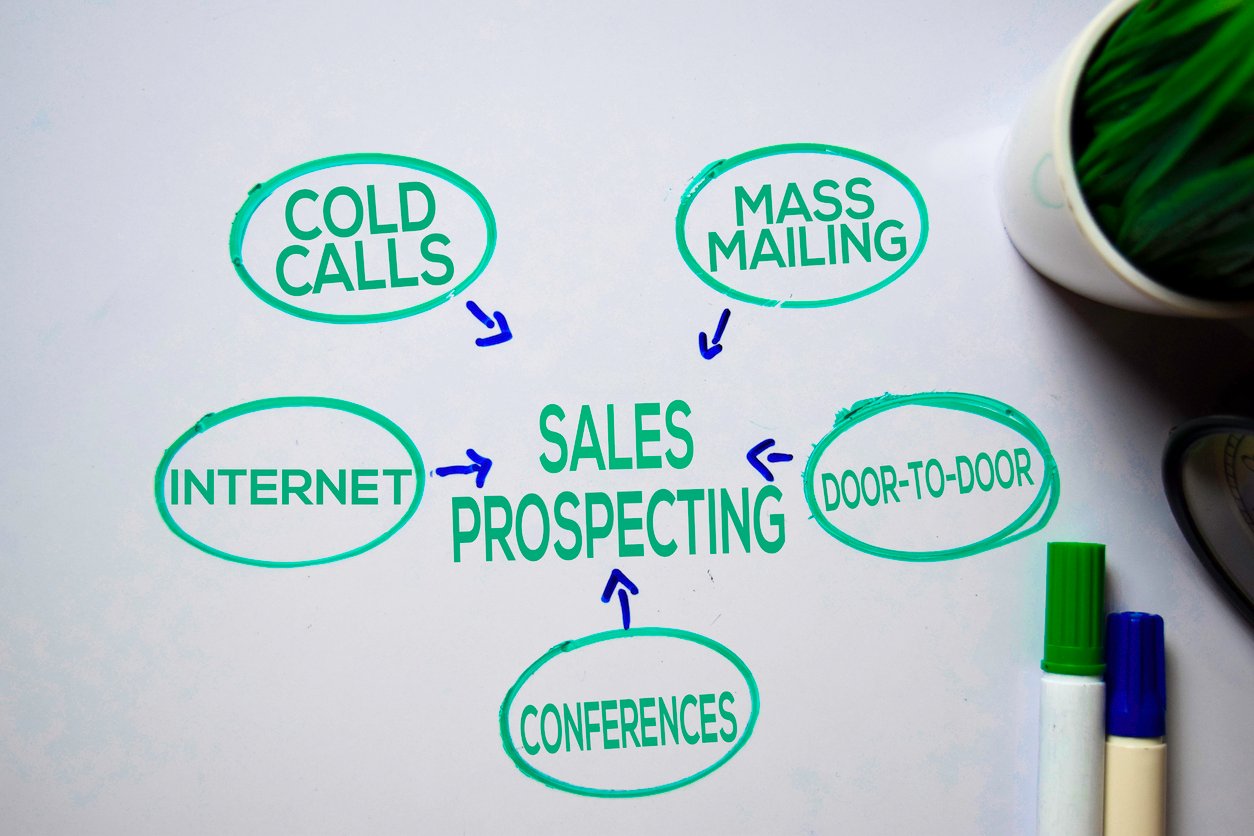
Demand Generation vs. Lead Generation: Key Differences
 Updated on
Updated on
 By Carlos Correa
By Carlos Correa
Carlos Correa
Carlos has been involved in the sales space for well over ten years. He began in the insurance space as an individual sales agent, managing teams as s...
learn more
Carlos Correa
Carlos has been involved in the sales space for well over ten years. He began in the insurance space as an individual sales agent, managing teams as s...
Table of Contents
Table of Contents
When it comes to growing your business, there's often confusion between demand generation and lead generation. Are they the same thing? Not quite.
They work hand in hand, but they have distinct purposes that can significantly impact your marketing strategy. So, it's important to know how each fits into your overall strategy.
Think of demand generation as the charm-the effort to create awareness and interest in what you offer. Lead generation, on the other hand, is like getting someone's number; it's about capturing information to start a conversation. But knowing when to charm and when to collect that contact info can make all the difference in building successful customer relationships.
Throughout this article, we'll look at the differences between demand generation vs lead generation, and we'll show you how tools like Ringy can enhance both processes, making them smoother and more efficient for your sales and marketing teams.
Let's get into it.
Demand Generation vs. Lead Generation: Core Differences
When looking into demand generation vs lead generation, the distinction lies in both the approach and the end goal.
At the heart of the difference between demand generation vs lead generation is their primary focus. Demand generation is all about planting seeds-getting people to know, like, and trust your brand before they're ready to buy.
Lead generation? That's the stage where you're collecting the fruits of that labor, capturing key information from prospects who are already interested.
In essence, demand generation focuses on creating awareness and interest, while lead generation focuses on capturing interested prospects' information.
Let's break it down a bit further in the table below:
|
Aspect |
Demand Generation |
Lead Generation |
|
Goal |
Create brand awareness, interest, and trust. |
Collect contact info and qualify potential leads. |
|
Buyer's Journey |
Early stage: building recognition and positioning. |
Mid-to-late stage: targeting prospects ready for action. |
|
Tactics |
Content marketing, social media, PR, influencer outreach. |
Gated content, email signups, webinars, and forms. |
|
KPI Focus |
Engagement (likes, shares, website visits, impressions). |
Conversion (email opt-ins, form completions, MQLs). |
|
Messaging |
Broad, value-driven, educational. |
Specific, value-driven, and more actionable. |
The Long-Term Nature of Demand Generation vs. Lead Generation
Another key difference lies in timing. Demand generation is more of a marathon, while lead generation is a sprint. Why? Because demand generation is a long-term investment. It's about building relationships, positioning your brand as a leader, and establishing credibility over time. You may not see immediate results, but you're planting the seeds for future growth.
In contrast, lead generation focuses on quicker wins. The goal is to move prospects down the sales funnel faster and convert them into leads that your sales team can engage with more directly. It's about actionable steps-capturing data that helps you personalize your outreach and nurture those leads toward a sale.
However, that doesn't mean demand generation should be overlooked in favor of faster lead generation tactics. It's a bit like baking bread. You can't rush the dough to rise (demand generation), but when it's ready, you can quickly shape it and bake it (lead generation).
Examples of Tactics Used in Demand Generation vs. Those Used in Lead Generation
The tactics involved in each strategy are also different, though they often work in tandem. Here's a closer look at how demand generation vs lead generation utilize unique methods:
- Demand Generation Tactics: Think content marketing-blog posts, eBooks, webinars, podcasts, social media awareness campaigns, influencer partnerships, and public relations efforts. These tactics focus on offering valuable content to build interest and engagement without asking for anything in return. It's about helping prospects discover your brand organically.
- Lead Generation Tactics: Once someone shows enough interest (like reading a blog or attending a webinar), it's time for lead generation tactics. Here, tools like gated content, email subscriptions, free trials, and webinar signups are key. You offer something of value (whitepapers, eBooks, exclusive reports) in exchange for contact information.
When to Use Demand Generation vs. Lead Generation

Deciding when to use demand generation vs. lead generation boils down to understanding the buyer's journey. This journey isn't a one-size-fits-all road trip; rather, it's a series of stages that every potential customer goes through, from the first moment they discover your brand to the point where they're ready to make a purchase.
Let's break it down into simple terms.
The Buyer's Journey and Where Demand Generation and Lead Generation Fit
In marketing, the buyer's journey typically follows three stages: Awareness, Consideration, and Decision. Each stage represents a different level of interest and intent from your audience, and each requires a different approach:
- Awareness Stage: The buyer realizes they have a problem or need but might not fully understand it yet.
- Consideration Stage: The buyer is actively researching potential solutions to their problem.
- Decision Stage: The buyer is ready to make a purchase decision and is weighing options.
Demand generation fits neatly into the awareness stage, where you're introducing potential customers to your brand. Here, you're not trying to convert them immediately-you're simply educating them about their problem and offering insights that build trust and credibility.
Lead generation, on the other hand, shines during the consideration and decision stages. By this point, prospects know what they need and are evaluating whether your product or service is the right fit. Lead generation captures their interest and pushes them closer to a purchase.
Early-Stage Awareness and Education: Demand Generation to Build Interest
At the beginning of the buyer's journey, it's all about creating awareness. Your prospects are out there, scrolling through social media, reading blogs, or maybe even watching a video on YouTube, unaware that your brand exists. Then comes demand generation-the long-term strategy that's designed to educate, entertain, and subtly guide them toward recognizing the value of what you offer.
Here's where tactics like content marketing, social media outreach, and influencer partnerships come into play. You're not asking for emails, signups, or commitments; instead, you're creating helpful content that addresses your audience's pain points and piques their curiosity.
Think of demand generation as creating buzz around your product, much like a movie trailer that builds excitement without giving away the entire plot. It's about making your brand hard to ignore without being overly pushy.
For example, Ringy's CRM can be incredibly useful here, helping businesses monitor audience engagement through features like insights and reports, ensuring you know when to start transitioning from demand generation to lead generation.
Mid to Late-Stage: Lead Generation to Convert Interested Prospects into Leads
Once prospects move into the consideration and decision stages, they're actively looking for solutions to their problem. They've already encountered your brand through demand generation efforts, and now they're more interested in specific products or services. This is where lead generation becomes crucial.
Here, it's time to move the conversation forward. Offer something more tangible in exchange for their contact information-whether it's a free trial, webinar, or gated content. The goal is to capture these interested prospects and nurture them with personalized communication that moves them closer to making a purchase decision.
Lead generation tactics should be more direct, and Ringy's CRM makes this process seamless by allowing you to track prospect engagement and manage personalized follow-ups. For instance, Ringy can automate follow-up emails or SMS messages based on the actions leads take, ensuring they don't lose interest during the nurturing phase.
How Demand Generation and Lead Generation Work Together

Demand generation and lead generation aren't separate, siloed strategies-they're actually partners in crime when it comes to a successful marketing funnel. In fact, it's only by integrating both that you can nurture your prospects from initial awareness all the way to the point of conversion.
Without this collaboration, you're either driving interest without capturing it or capturing leads without first building interest. And that's like trying to bake a cake without flour or sugar-something vital is missing!
Importance of Integrating Demand Generation and Lead Generation
When you think about demand generation vs lead generation, it's easy to focus on their differences. But the magic happens when you bring these two together in a cohesive, full-funnel marketing strategy. Demand generation builds awareness and trust, warming up your audience, while lead generation swoops in to capture that interest at just the right moment.
A full-funnel strategy ensures that no prospect is left behind. You're not just filling the top of the funnel with uninterested visitors, nor are you relying on cold leads that aren't familiar with your brand. Instead, demand generation nurtures a wide audience and primes them, so by the time lead generation comes into play, your prospects are warmed up and ready to engage.
This integration is especially important because research shows that nurtured leads produce a 20% increase in sales opportunities compared to non-nurtured leads. So, without demand generation, your lead generation efforts are missing out on valuable context and trust.
How Demand Generation Nurtures Prospects, Making Lead Generation Efforts More Effective
Imagine jumping straight into lead generation without any prior demand generation-it's like proposing on a first date. Not many people will say yes! Demand generation builds that relationship, warming up prospects and creating familiarity before you ask them for any commitment.
By consistently providing valuable content-whether it's blog posts, infographics, or social media campaigns-you're nurturing your audience over time. This means that when you do shift gears into lead generation, your prospects are far more likely to give up their contact information or take the next step because they already know and trust your brand.
For example, suppose your demand generation efforts involve informative content on solving common business challenges. In that case, your prospects are already primed to download that gated whitepaper when your lead generation offer comes along. It feels natural, not pushy. And that's why integrating demand generation into your lead generation strategy makes the latter more effective.
Examples of Combined Strategies of Lead Generation vs Demand Generation
The beauty of combining demand generation and lead generation is that they work in tandem to move prospects down the funnel. Here's how you can structure a strategy that blends both approaches:
|
Stage |
Demand Generation Tactic |
Lead Generation Follow-Up |
|
Early Awareness |
Publish a blog post addressing common industry pain points. |
Offer a downloadable eBook or whitepaper on the same topic. |
|
Interest Building |
Run a social media campaign showcasing customer success stories. |
Include a CTA for webinar registration or a product demo. |
|
Nurturing Engagement |
Create a video series answering FAQs or solving key challenges. |
Add a lead capture form to subscribe for in-depth guides. |
|
Final Consideration |
Share case studies or product comparison articles. |
Gated content or a free trial sign-up to capture key details. |
Demand Generation Tactics and Best Practices

As explained, demand generation tactics allow you to plant the seeds of interest early on and nurture those relationships over time, eventually leading to high-quality sales leads that are already primed for conversion.
Now, let's look into some of the most effective demand generation tactics and best practices that will help your brand stand out.
1. Content Marketing
Content marketing is the bread and butter of demand generation. It's all about providing value, educating your audience, and positioning your brand as an industry leader.
The key here is to create educational, thought-leadership pieces that address your target audience's pain points and questions. When done right, this builds brand authority and keeps your company top-of-mind.
For example, you could create long-form blogs, eBooks, or whitepapers that dive deep into industry challenges, offer solutions, and showcase your expertise. Over time, as prospects find your content helpful and trustworthy, they'll start associating your brand with the solution to their problems-even before you ask them to engage further.
According to statistics, 80% of B2B decision-makers prefer to learn about products through content rather than traditional ads, making content marketing a critical component of any demand generation strategy.
Best practices for content marketing include:
- Consistency: Regularly publishing high-quality, relevant content that meets your audience's needs.
- Diversity: Offering a mix of formats, such as blog posts, infographics, and video content, to keep things interesting.
- SEO Optimization: Ensuring your content is optimized to rank in search engines, increasing visibility.
2. Social Media Campaigns
While content marketing is great for in-depth education, social media is the perfect platform for creating immediate awareness and nurturing interest. A well-placed social media campaign can introduce your brand to a large audience, and more importantly, it lets you engage with them on a more personal level.
Social media campaigns are crucial in demand generation because they meet your audience where they already spend a lot of their time. Platforms like Facebook, LinkedIn, Instagram, and Twitter/X give you the chance to share your content, spark conversations, and build a community around your brand.
Best practices for social media demand generation include:
- Paid Ads: Use paid social media ads to boost the reach of your most valuable content, targeting specific demographics and interests.
- Interactive Content: Post polls, quizzes, or Q&A sessions to encourage engagement and interaction.
- Consistency and Branding: Maintain a consistent posting schedule and ensure your messaging aligns with your brand voice and values.
A witty social media campaign can create buzz and drive traffic to your educational content or landing pages. Think of it as throwing breadcrumbs-engage users with short, snappy content on social media, then lead them to longer-form content where they can learn more.
3. Account-Based Marketing (ABM)
While broad content marketing and social media campaigns help to create general awareness, account-based marketing (ABM) focuses on generating demand within specific, high-value segments. ABM is a laser-focused strategy, targeting particular accounts (often large companies) with personalized marketing efforts that speak directly to their unique challenges.
The key to ABM is personalization. It's not enough to create generic content-you'll need to craft highly tailored messages, whether through personalized email campaigns, targeted ads, or even custom content like case studies that address the specific pain points of each account. ABM works best for B2B companies targeting high-value prospects, where building deep relationships with a select few is more important than appealing to the masses.
ABM demand generation tactics include:
- Personalized Outreach: Developing content specifically designed for high-value accounts, addressing their unique needs.
- Exclusive Events or Webinars: Hosting invite-only events or webinars that provide targeted insights for key decision-makers in your target accounts.
- Custom Landing Pages: Creating landing pages with messaging and content tailored to the specific needs of a target account or industry.
ABM is a long-term game, but when done correctly, it results in highly qualified leads. You're essentially hand-picking the accounts you want to convert, creating demand directly within their organization through personalized and focused marketing.
Ringy CRM is particularly useful in ABM efforts, offering tools to track interactions with specific accounts and automate personalized follow-ups that nurture the relationship over time.
Lead Generation Tactics and Best Practices

Once you've built awareness and sparked interest through demand generation, it's time to get more tactical and drive prospects toward conversion. The following lead generation tactics are designed to capture interest at key points, helping turn curiosity into qualified leads.
1. Gated Content
The idea here is that your content is valuable enough that prospects are willing to "pay" for it with their information, allowing you to nurture them further.
Some examples of effective gated content include:
- White Papers: Detailed reports or guides on specific industry topics that showcase your expertise.
- eBooks: Comprehensive guides that solve specific problems your audience faces, giving them valuable knowledge while positioning your brand as a solution provider.
- Webinars: Live or recorded events where prospects can learn directly from your team and ask questions in real-time.
Gated content not only helps you generate leads but also filters out casual browsers, leaving you with prospects who are genuinely interested.
Best practices for gated content include:
- Clear Value Proposition: Make sure the content behind the gate is valuable enough to warrant a form submission.
- Simple Forms: Keep forms short and to the point-only ask for the information you truly need.
- Teasers: Provide a sneak peek of what's behind the gate to entice users.
2. Email Marketing
Once you've captured a prospect's contact information through gated content, the next step is nurturing them through email marketing. This tactic allows you to send targeted messages, keeping your brand top-of-mind while providing relevant offers, tips, and information that move the prospect closer to conversion.
With lead generation, email marketing becomes a powerful tool to segment your audience based on their actions and tailor your messaging accordingly.
Here's why email marketing works:
- Personalization: Emails can be highly personalized based on the prospect's behavior or interests.
- Segmentation: You can categorize leads into different segments (new leads, engaged leads, etc.) and deliver content that's relevant to each group.
- Automation: CRM tools like ours automate email sequences, ensuring timely follow-ups without manual effort.
The key is to offer consistent value at each stage of the buyer's journey, keeping your leads engaged without overwhelming them. According to Litmus, email generates $36 for every $1 spent, making it one of the most cost-effective tactics for lead generation.
Best practices for email marketing include:
- Segmentation: Organize your email list into segments based on engagement levels or interests.
- A/B Testing: Experiment with different subject lines, CTAs, and content to see what resonates best with your audience.
- Consistency: Send emails on a regular schedule, but avoid bombarding your prospects with too many emails too quickly.
3. Retargeting Ads
You know that feeling when you browse a website, leave without making a purchase, and then see an ad for the very same product while scrolling through social media? That's retargeting in action, and it's a key tactic for lead generation. Retargeting ads focus on prospects who have already shown interest in your demand-generation content but haven't taken the next step.
These ads remind prospects of your brand, re-engaging them and guiding them back to your site or landing page, ideally moving them closer to conversion.
Examples of effective retargeting include:
- Display Ads: Ads that appear on websites or social media, showcasing the content or product the prospect previously viewed.
- Facebook Retargeting: Using Facebook's Pixel to track visitors to your site and retarget them with personalized ads on Facebook or Instagram.
- Google Ads Retargeting: Serving ads to users who have visited specific pages on your website through the Google Display Network.
Best practices for retargeting ads:
- Tailored Messaging: Personalize the ads to align with the prospect's previous interactions with your brand.
- Frequency Caps: Set limits on how often your retargeting ads are displayed to avoid overwhelming prospects.
- Clear CTA: Include a compelling call to action that guides the lead toward the next step-whether it's signing up for a demo or downloading additional content.
Conclusion
In conclusion, demand generation vs lead generation are two essential components of a successful marketing strategy. By understanding the differences between these two approaches and effectively integrating them into your marketing efforts, you can drive brand awareness, generate leads, and, ultimately, increase sales.
Ringy, our powerful CRM platform, can help you streamline your processes and achieve your marketing goals. With Ringy, you can:
- Centralize your customer data: Keep all your customer information in one place for easy access.
- Automate lead generation and nurturing: Save time and effort with automated workflows.
- Track your marketing performance: Measure the effectiveness of your campaigns and make data-driven decisions.
- Provide exceptional customer service: Deliver personalized experiences and build long-lasting relationships.
Request a Ringy demo today and discover how our platform can help you maximize your marketing efforts.

Skyrocket your sales with the CRM that does it all.
Calling? Check. SMS? Check. Automation and AI? Check. Effortlessly keep in touch with your customers and boost your revenue without limits.

Take your sales to new heights with Ringy.
Sales in a slump? Ringy gives you the tools and flexibility you need to capture leads, engage with them, and turn them into customers.
Subscribe to Our Blog
Enter your email to get the latest updates sent straight to your inbox!
Categories
Related Articles




































































































